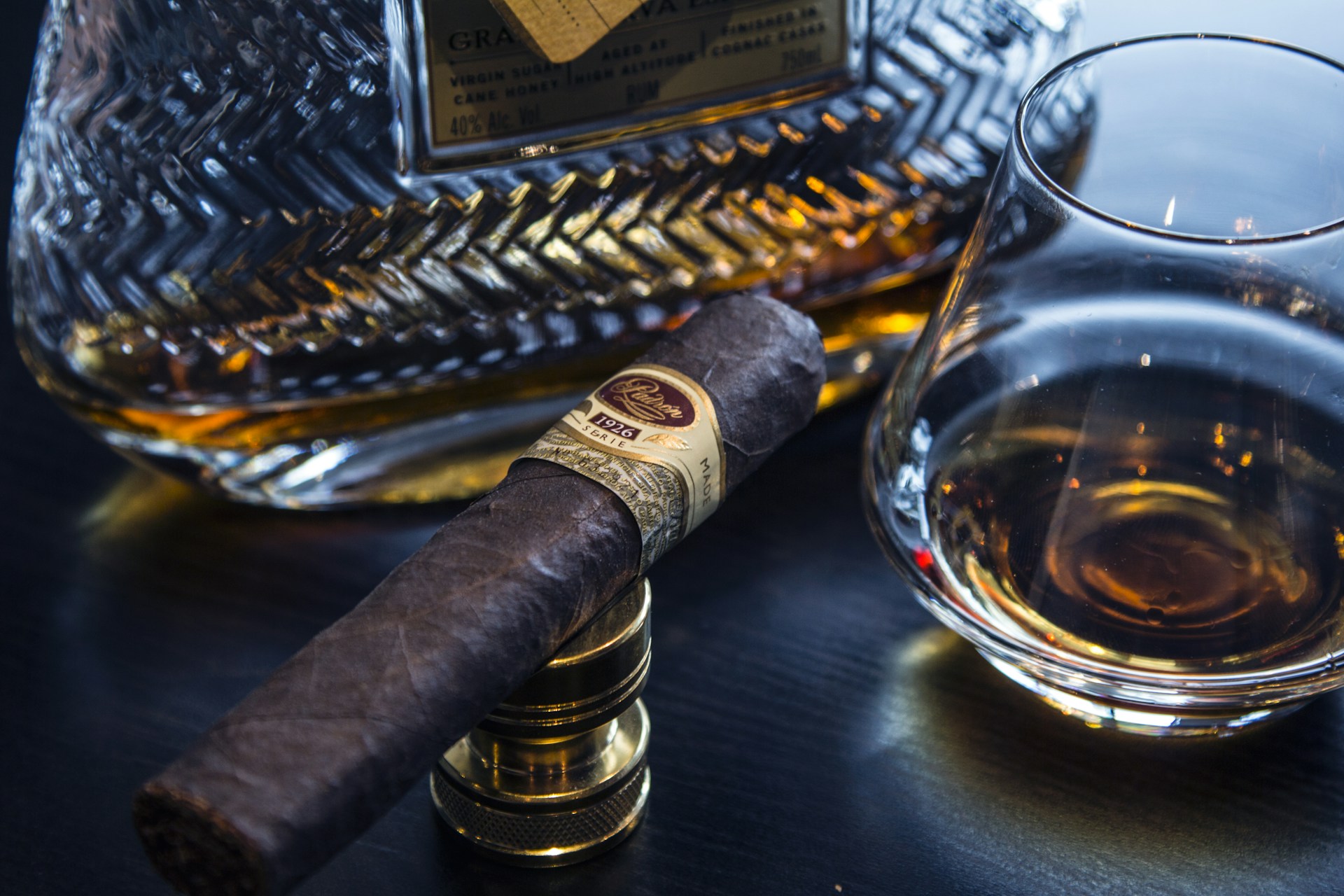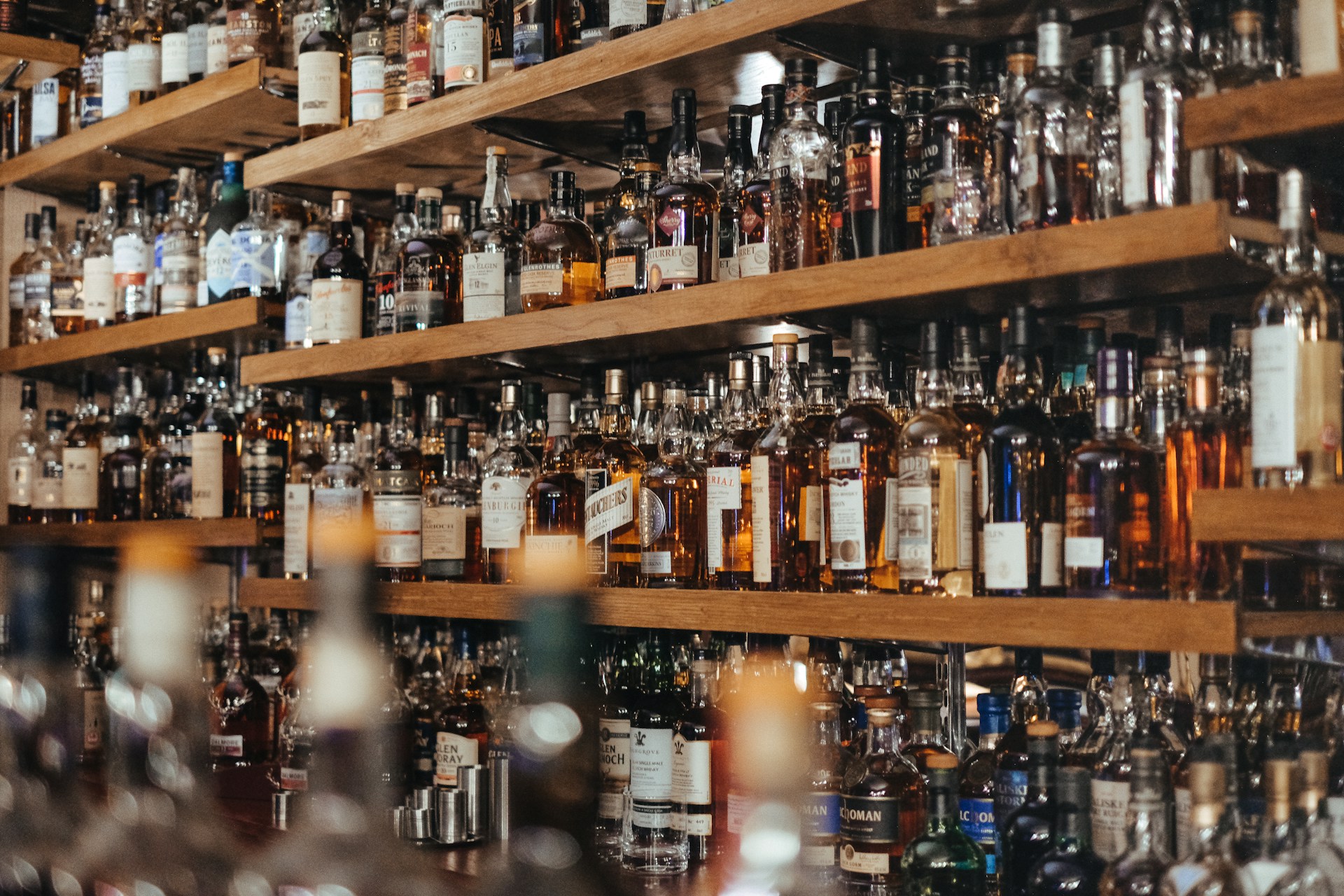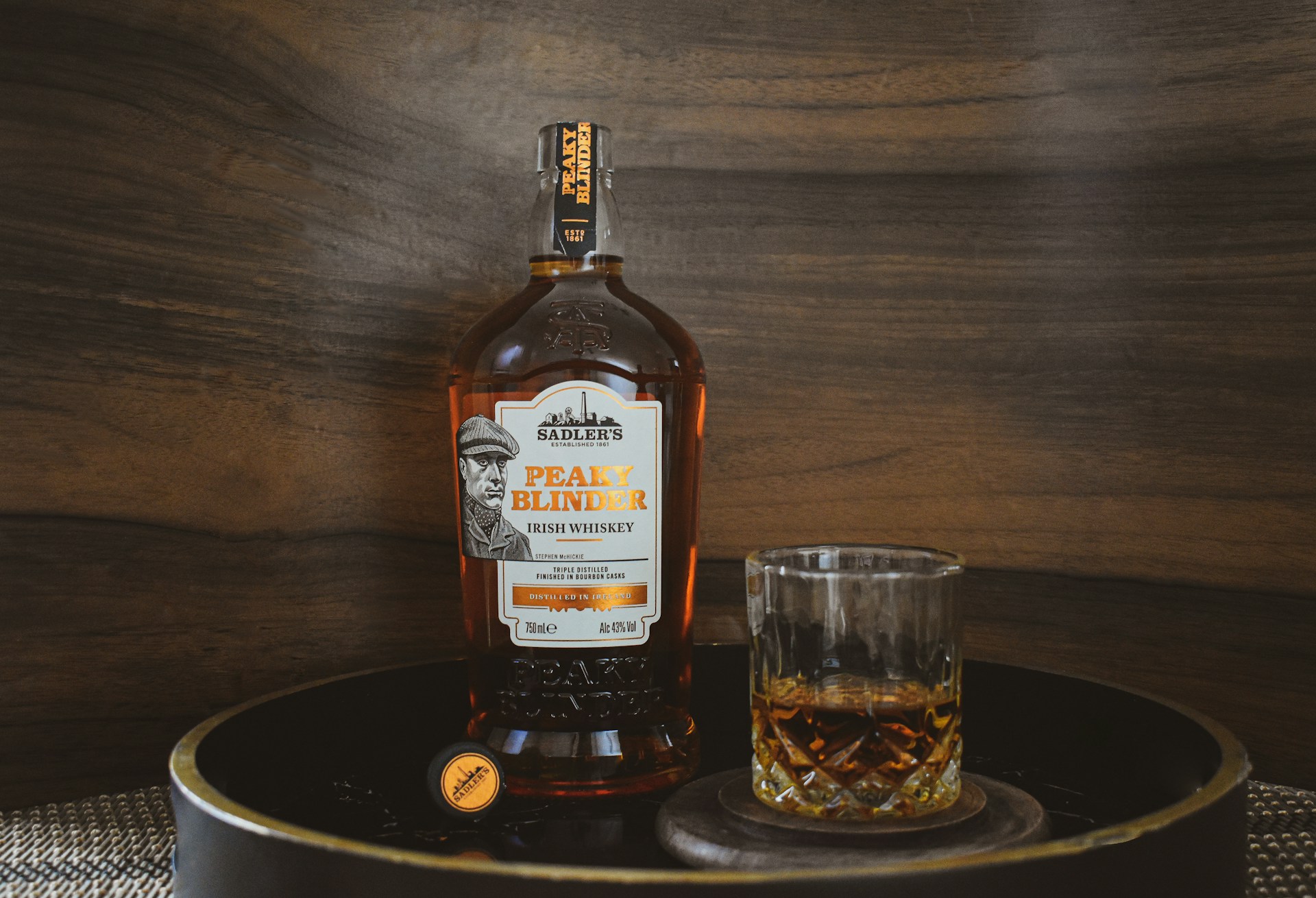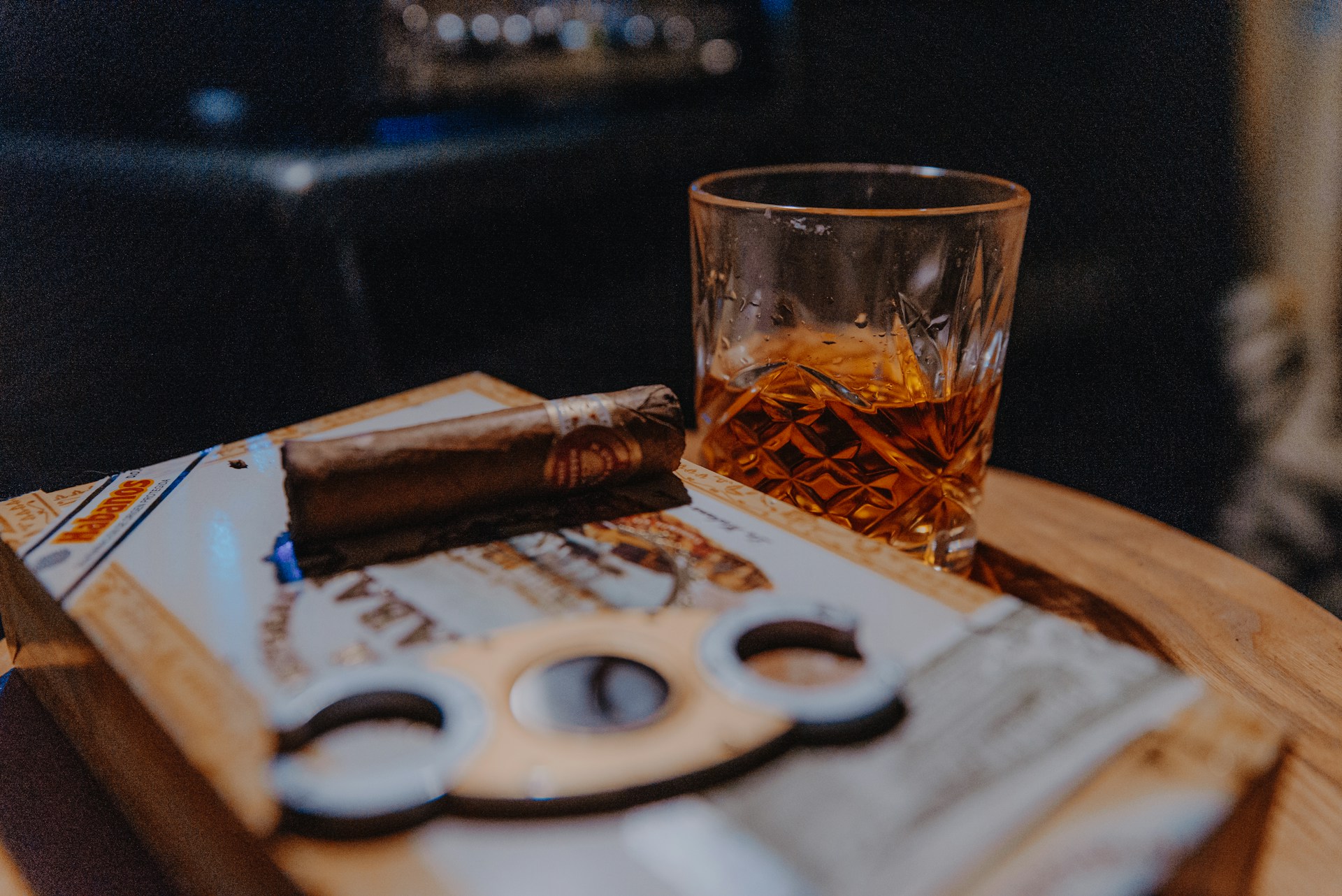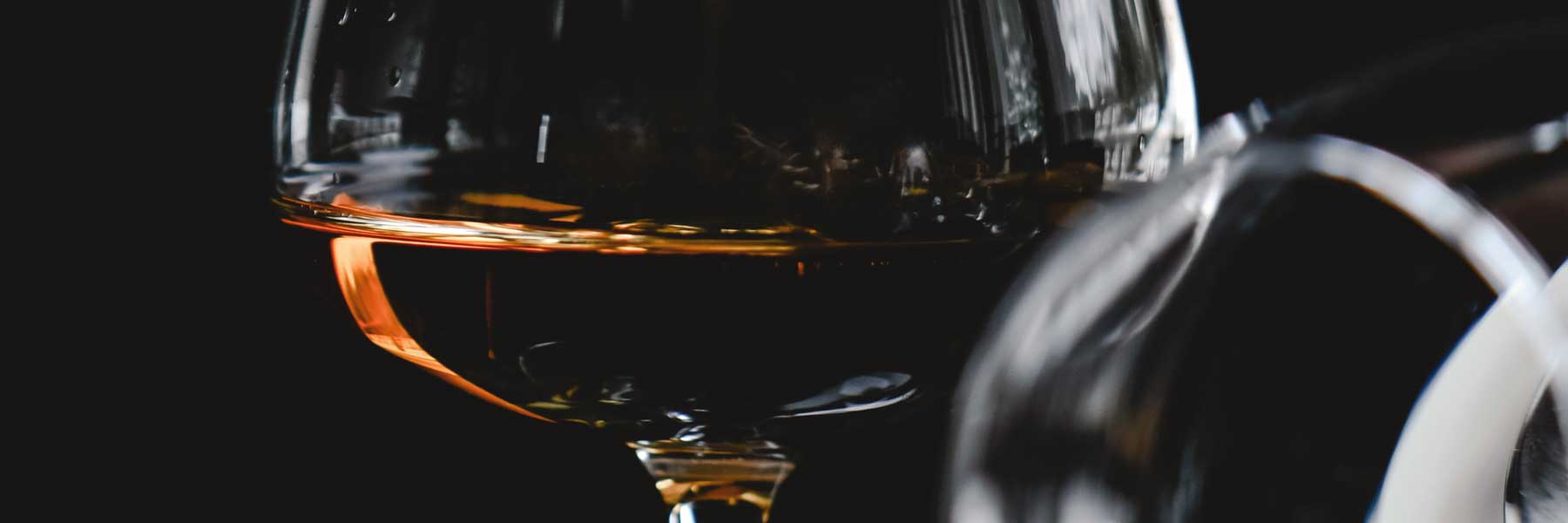The Whiskey Distillation Process Simplified
Last updated on November 12th, 2024
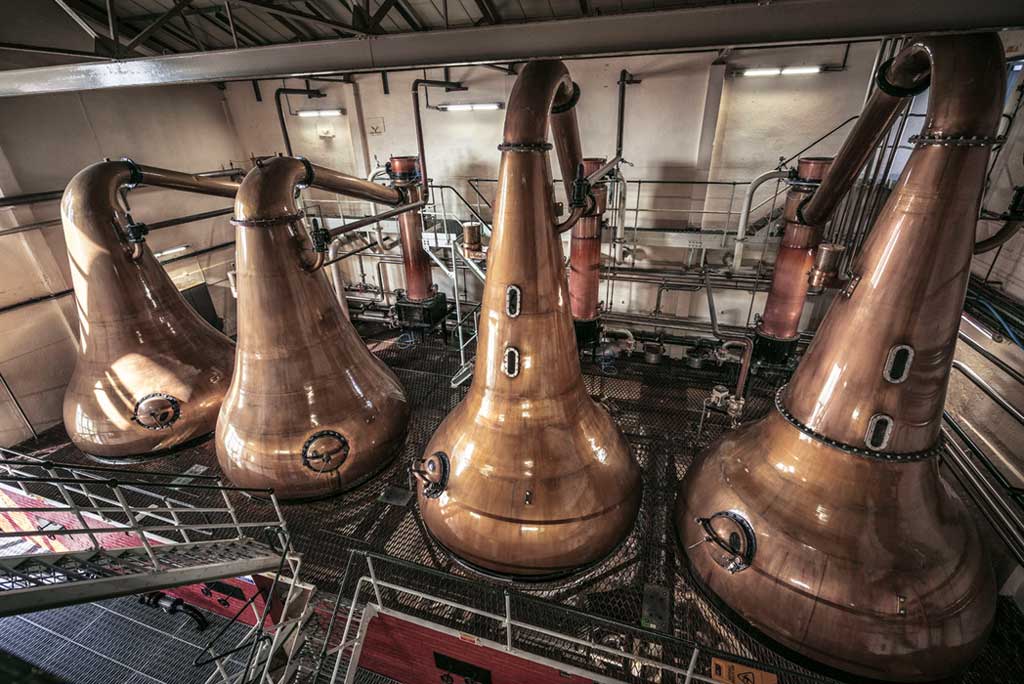
Whiskey distillation transforms just three simple ingredients into a complex, flavorful, and highly alcoholic spirit. If you’re curious about how whiskey is distilled, this detailed guide shows you the science behind one of the world’s most beloved spirits.
What is whiskey distillation?
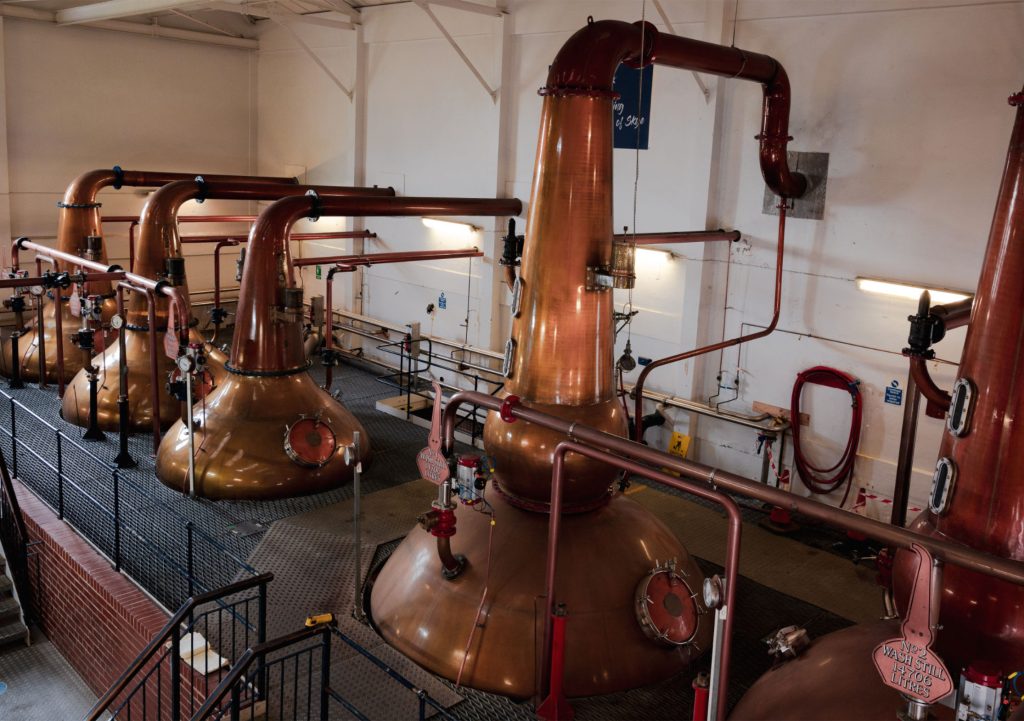
Distillation is where alcohol is extracted from a basic type of beer of around 7% ABV, resulting in a refined, highly alcoholic distillate of around 60% ABV – ready for barrel aging.
This crucial step of whiskey-making is what separates alcohol from water whilst allowing the flavors developed during fermentation to come through. It’s a process that requires skill, precision, and a deep understanding of the spirit being made.
Fundamentally, distillation takes advantage of the different boiling points of alcohol and water.
Because alcohol boils at a lower temperature than water, it evaporates first. This means it can be separated and concentrated through careful heating inside vessels known as stills.
The process begins by transferring beer known as ‘wash’ into a still. There are two main types of stills used in whiskey production: pot stills and column stills. We’ll delve deeper into these in the next section, but for now, let’s focus on the general process.
The first distillation happens in a traditional pot still, where the wash is heated until it begins to boil. The alcohol vapors rise up the neck of the still and are directed into a condenser. Here, they’re cooled back into liquid form, resulting in a higher alcohol concentration than the original wash.
This liquid, known as “low wines,” typically has an alcohol content of about 20-30% ABV. It’s then distilled a second time in a smaller still, often called the spirit still.
This second distillation extracts the alcohol further, refining the flavors to produce a much higher alcohol content of around 60% ABV. This isn’t whiskey yet, but is often called “white dog” in the US or “new make spirit” in Scotland and Ireland.
During this second distillation, the master distiller makes crucial decisions whilst the liquid comes off the spirit still. As it flows, the new make spirit ‘run’ is divided into three phases;
Foreshots
The first phase of distillate that runs off the spirit still during the second distillation process. Also known as the ‘heads’ or ‘the first cut’, foreshots are an unpleasant, volatile and potentially toxic liquid containing methanol, acetone, ethyl acetate and acetaldehyde. With undesirable and harmful properties, the foreshots are discarded from ‘the run’.
Hearts
This phase of the distillate is the good stuff. It contains all the desirable flavors and compounds that were developed during fermentation and refined during the first distillation. This part of the run occurs after the heads, where the master distiller needs to redirect the flow of distillate to be kept. This term is also known as ‘Heart of the run’ or the ‘center cut’.
Feints
The last phase of distillate that runs off the spirit still during the second distillation process. Also known as feints or ‘the final cut’ the tails begin to flow after the desired ‘center cut’ distillate has been captured from the spirit still. Occurring near the end of distillation, fusel oils begin to appear which are undesirable and would otherwise impede the spirit’s purity.
Depending on the distillery and their style of whiskey, a small amount of the feints may also be included with the center cut. However, the majority of the feints are kept as they can be redistilled in future batches to maximize yield.
Some whiskeys, particularly Irish ones, are distilled a third time which typically produces a lighter spirit. Certain Scottish Lowland distilleries such as Auchentoshan also triple distil, but this is uncommon for Scottish single malts.
By the end of distillation, we have a crystal-clear spirit with an alcohol content of around 60-70% ABV. This “new make” spirit is potent and fiery, bearing little resemblance to the smooth whiskey it will later become.
A word on reflux
In Scotland, distillers often speak of “copper conversation” – the interaction between the spirit vapors and the copper of the still. This contact known as ‘reflux’ helps remove sulphur compounds and influences the final flavor of the whisky.
At this stage, if you were to taste the new make spirit, you’d find it surprisingly fruity and grain-forward, with none of the oak influence or color we associate with aged whiskey. It’s a raw, powerful spirit that holds the promise of what it matures to become.
It’s worth noting that distillation isn’t just about increasing alcohol content. The way in which the spirit is distilled can hugely affect the final flavor which can vary depending on multiple factors. These include the shape of the still, the speed/flow-rate of distillation, and even the angle of the exit-pipe leading away from the still into the condenser.
This is more relevant to pot stills compared to column stills which I’ll discuss in the section below.
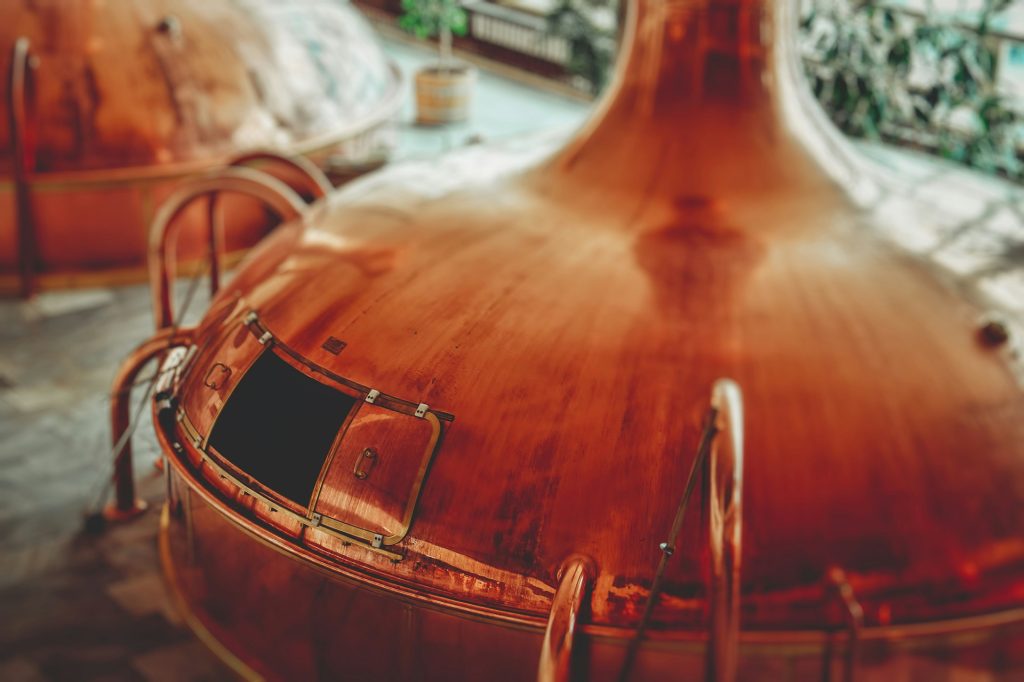
Types of Stills: Pot Stills vs Column Stills
When it comes to whiskey distillation, there are two main types of stills you’ll encounter: pot stills and column stills. Each has its own characteristics and is typically associated with different styles of whiskey. Understanding the difference between these two can shed light on why certain whiskeys taste the way they do.
Pot Stills
Pot stills are the traditional workhorses, commonly used in Scotland and Ireland. They’re shaped like large copper kettles with a bulbous base and a narrow neck. Pot stills work on a batch-basis, distilling a finite amount of wash at a time. They’re much less efficient than column stills but are prized for producing a more flavorful spirit with more congeners (flavor compounds).
The shape of a pot still, its height and angle of the lyne arm (the pipe leading from the still to the condenser), can all significantly influence the character of the spirit.
Tall pot stills tend to produce lighter spirits, as the vapor has further to travel and more chance to refine. Glenmorangie have the tallest stills in Scotland whilst Lagavulin (Islay) have very short and stout pot stills.
Faster distillation can result in a heavier spirit with more intense flavors, while slower distillation often yields a smoother, more delicate product.
Upward lyne arms (the pipe leading to the condenser) often force vaporized spirit back into the still. This creates more reflux, producing a lighter, more delicate style of spirit.
Downward lyne arms create less reflux, allowing more congeners in the final distillate. This typically creates a heavier style of spirit with a fuller body.
Column Stills
Column stills, also known as Coffey or continuous stills, were invented in the 19th century and revolutionized spirits production. Unlike pot stills, column stills can operate continuously, making them much more efficient.
They consist of two tall columns: a rectifier and an analyser. Simply put, they’re a bit like a tall stack of pot stills which are all interconnected in a tower.
The wash (beer) is fed in at the top of one column and steam is pumped in from the bottom. As the alcohol vapors rise, the wash separates into different sections within the column based on their boiling points.
Low alcohol wash remains in the lower sections, being repeatedly vaporized. As the vapors rise upwards through the column, they recondense and vaporized becoming stronger and stronger in ABV%. Eventually, only the purest vapors reach the top of the column which then exit out the top and recondense into highly refined grain spirit.
Column stills allow for greater control over the final product and can produce a spirit with a very high alcohol content in a single distillation. Column stills are commonly used in the production of Scottish and Irish grain whiskey (usually maize or wheat).
Column stills are much more common in American whiskey and bourbon production. They’re used for the first distillation, followed by secondary distillation using modified pot stills known as doublers.
Choosing the Right Still
The choice between pot and column stills often comes down to tradition and the desired style of whiskey. Single malt Scotch, or single malt Irish whiskey, for instance, must be produced in pot stills by law.
Many bourbon distilleries use a combination of column stills for their first distillation and pot stills (often called doubler or thumper) for the second. This allows them to maintain efficiency while still imparting some of the character associated with pot still distillation.
It’s worth noting that while the type of still is important, it’s just one factor among many that influence a whiskey’s final character. The skill of the distiller, the quality of the ingredients, and the maturation process all play crucial roles. Understanding the difference between pot and column stills can add another layer of appreciation to your whiskey experience.
How Distillation Affects flavor
Distillation plays a crucial role in shaping the flavor profile of whiskey. This process not only concentrates alcohol but also selectively separates and refines compounds, ultimately influencing the character of the final product.
Separation of compounds: During distillation, different compounds vaporize at varying temperatures. This allows distillers to separate desirables from less pleasant ones. The “heads” (first part of the distillate) often contain harsh, volatile compounds, while the “tails” (last part) may include heavier, sometimes unpleasant s. The “heart” of the distillate, which contains the best balance of s and alcohol, is typically selected for aging.
Copper interaction: Most stills are made of copper, which plays an active role in development. Copper interacts with sulfur compounds, removing unpleasant odors and tastes. It also catalyzes reactions that create fruity esters, contributing to the whiskey’s complexity.
Still shape and size: The shape and size of the still affect by influencing reflux – the process where vapors condense and fall back into the still. Taller stills with narrower necks typically produce lighter, more refined spirits, while shorter, wider stills often yield fuller-bodied whiskeys with more character.
Cut points: The distiller’s decision on where to make the “cuts” – separating the heads, hearts, and tails – significantly impacts the final whiskey flavor. Earlier cuts generally result in lighter, cleaner whiskeys, while later cuts can introduce more complexity but risk including less desirable components.
Double distillation vs. triple distillation: The number of distillations affects intensity and smoothness. Double distillation, common in Scotch production, often results in more robust s. Triple distillation, typical in Irish whiskey, generally produces a smoother, lighter spirit.#
Pot stills, used for batch distillation, tend to retain more compounds, resulting in more character-rich spirits.
Column stills, used for high-volume, continuous distillation, can produce stronger-alcohol, cleaner-tasting spirits with fewer congeners.
By manipulating these aspects of the distillation process, master distillers can craft a wide range of profiles, from light and delicate to rich and complex, setting the foundation for the whiskey’s ultimate character.
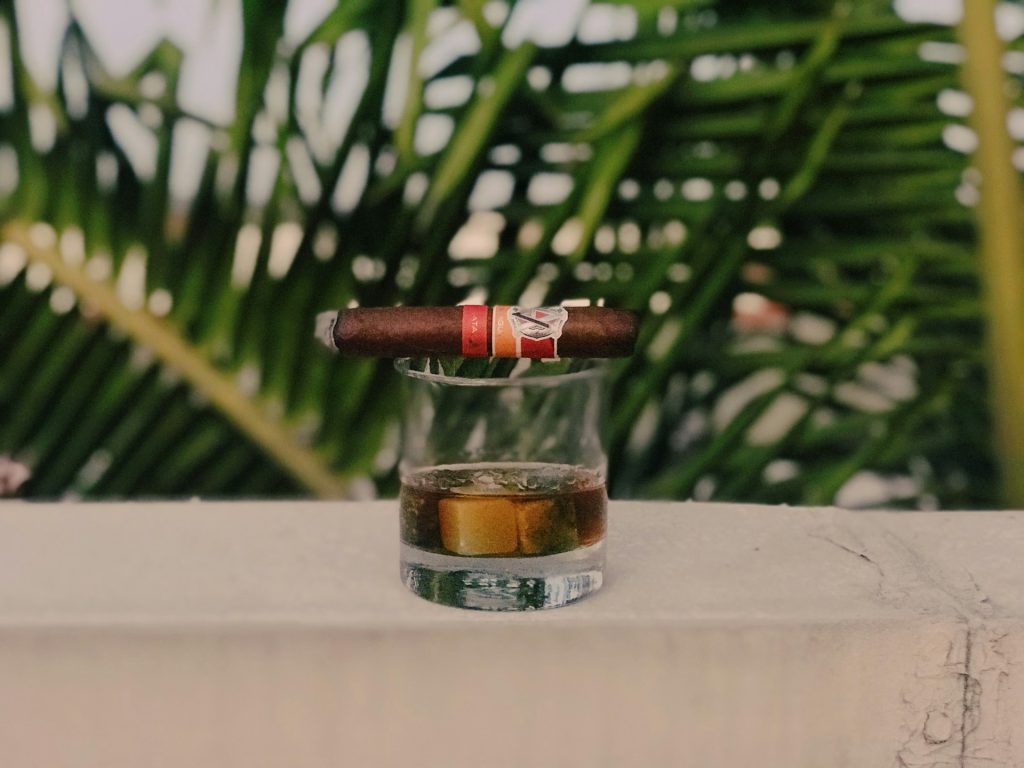
FAQs
1. How long does whiskey need to be aged?
The minimum aging period varies by country and type of whiskey. For example, Scotch whisky must be aged for at least 3 years, while bourbon has no minimum aging requirement but must be aged in new charred oak barrels to be called “straight bourbon.”
2. What’s the difference between whiskey and whisky?
The spelling varies by region. “Whiskey” is generally used in Ireland and the United States, while “whisky” is used in Scotland, Canada, and Japan. The production processes can differ, but the spelling doesn’t necessarily indicate a specific style.
3. Does older whiskey always mean better quality?
Not necessarily. While age can contribute to complexity and smoothness, it doesn’t guarantee superior quality. Younger whiskies can be excellent, and over-aging can sometimes lead to an overly woody flavor.
4. What causes the smoky flavor in some whiskies?
The smoky flavor, particularly common in Scotch whiskies, comes from using peat-smoked malted barley in the production process. The level of smokiness depends on how long the barley is exposed to peat smoke during malting.
5. Can whiskey go bad?
Unopened whiskey can last indefinitely if stored properly. Once opened, whiskey can slowly oxidize, potentially affecting its over time (usually years), but it doesn’t become unsafe to drink.
6. What’s the angels’ share?
The “angels’ share” refers to the portion of whiskey that evaporates from the barrel during aging. Depending on the climate, this can amount to about 2% of the volume per year.
7. How does the choice of barrel affect whiskey ?
The barrel significantly influences flavor. New barrels impart stronger wood flavors, while used barrels (like those previously used for sherry or wine) can add unique taste profiles. The char level of the barrel also affects flavor development.
8. Is all whiskey made from barley?
No, whiskey can be made from various grains. While single malt Scotch is made from malted barley, bourbon must be at least 51% corn, and rye whiskey must be at least 51% rye. Other grains like wheat are also used in some whiskeys.
Summary
- Whiskey production begins with malting grains, followed by mashing to extract fermentable sugars.
- Fermentation converts sugars to alcohol, creating a beer-like wash.
- Distillation concentrates alcohol and refines s using pot or column stills.
- The shape, size, and material of stills significantly influence the whiskey’s profile.
- Maturation in oak barrels develops complexity and smoothness over years.


